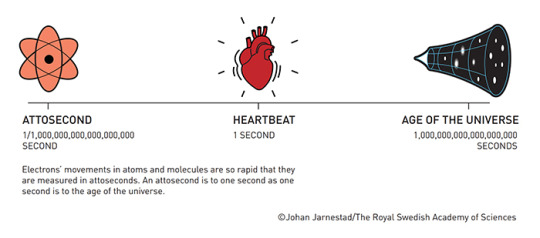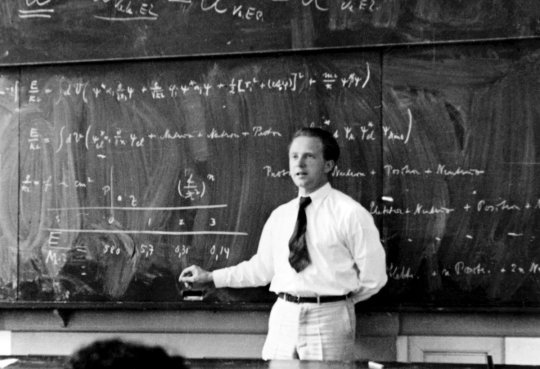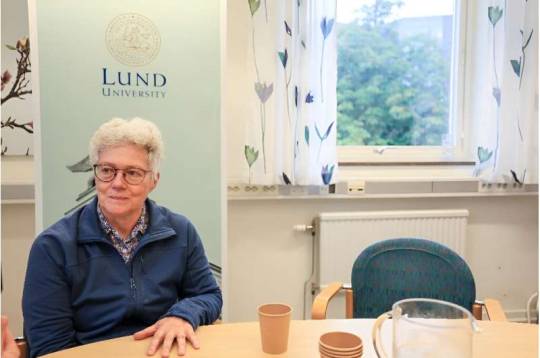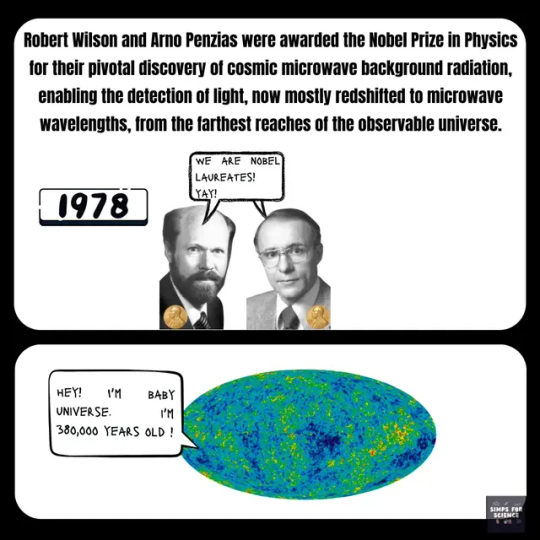#Nobel Prize Physics
Text
Polarized Whispers from the Galactic Heart: Unveiling the Magnetic Mystique of Sagittarius A*
Image Staring into the cosmic abyss, today’s unveiling is nothing short of stellar—a polarized portrait of Sagittarius A* (Sgr A), the supermassive heart of our Milky Way. This isn’t merely a snapshot; it’s a revelation, 27,000 light years in the making.Deciphering this astronomical enigma took a blend of artistry and precision, with scientists teasing out the “twist” of light known as…

View On WordPress
#accretion disk#astrophysical research.#astrophysics#black hole#celestial phenomena#cosmic art#cosmic jet#Event Horizon Telescope#galactic center#general relativity#gravitational lensing#Jade Ann Byrne#magnetic fields#Nobel Prize physics#Paladin Jade#radio astronomy#Sagittarius A*#scientific discovery#space exploration#supermassive black hole
1 note
·
View note
Text
i find it so unfair that i cant do all the science. like what do you MEAN I can't study bio and chem and biochem and atrophysics and physics and geology and climate science. what do you MEAN i have a limited lifespan and need to get out of school at some point to get a job. i want to collect the science fields like pokemon, this isn't fair
#minty's crystals#science#biology#chemistry#physics#astrophysics#astronomy#stem#I'm literally such a nerd but i want to learn EVERYTHING i want to be the MASTER OF SCIENCE#also i wanna be famous for it#something something nobel prize something something cover of time magazine#academia#chaotic academia
5K notes
·
View notes
Text
The Nobel Prize in Physics 2022
This year’s Nobel Prize in Physics is dedicated to quantum mechanics. Albert Einstein, Niels Bohr and Erwin Schrödinger all thought about quantum mechanics in 1935. Einstein challenged quantum mechanics and argued that although correct, it was not a complete theory. He thought there must be an underlying structure to quantum mechanics that so far had not revealed itself. Bohr, on the other hand, defended the theory and argued that it was complete. Finally, Schrödinger concluded that entanglement between two particles with a common past was the characteristic trait of quantum mechanics.
Most physicists sided with Bohr and noted Schrödinger’s characterisation of entanglement, but mostly they were not that interested. They were too busy applying quantum mechanics to real world problems, both of fundamental character and for practical applications. Several of these practitioners of quantum mechanics would eventually receive the Nobel Prize in Physics and many of the things we today take for granted, such as streamed television, fast internet, mobile phones, and a plethora of medical diagnostics tools, all have their origins in quantum mechanics. Indeed, the laureates of 2020 and 2021 − Roger Penrose, Reinhard Genzel, Andrea Ghez, Syukuro Manabe, Klaus Hasselmann and Giorgio Parisi − are no exceptions.
While the world moved on, a few physicists continued to think about the foundations of quantum mechanics. In 1964, John Stewart Bell invented a mathematical formula, Bell’s inequality, which pointed to a way to experimentally resolve the conflict between Einstein and Bohr. Most physicists did not pay attention. Why bother with a foundational problem of quantum mechanics that would have no practical consequences? From their perspective, the theory worked. It had been well established in textbooks and taught at universities for decades. Although it was recognised that quantum entanglement was an elusive and hard-to-understand trait of quantum mechanics, few realised what it could be used for.
John Clauser was of a different opinion. When he heard about Bell’s inequality, he became obsessed with how to experimentally test it. He left his main research direction and, working with a younger colleague named Stuart Freedman, managed to perform the very first experimental test of Bell’s inequality. Their experimental effort fifty years ago, done on a shoestring budget, showed that quantum mechanics violated Bell’s inequality and that quantum mechanics correctly predicted the outcome of their experiment. Sadly, neither Bell nor Freedman is still with us today.
John Clauser’s experiment appeared convincing and suggested that Bohr was more correct than Einstein. But Bell realised that there were a few shortcomings in Clauser’s experiment, shortcomings that seemed almost impossible to overcome. It is now that Alain Aspect entered the scene. Together with colleagues in France, he managed to overcome these shortcomings and performed a series of experiments that were broadly recognised. These experiments were even highlighted in Swedish newspapers, though sometimes stretched well beyond their actual results.
The experimental test of Bell’s inequality now entered a new era, thanks to Anton Zeilinger and his collaborators. While Zeilinger and others continued to close some remaining loopholes in the Clauser and Aspect experiments, even more importantly, they demonstrated how the elusive concept of quantum entanglement can be useful. This was a giant leap from Zeilinger’s Austrian predecessor Schrödinger, and it is remarkable how the circle began in Austria and was closed in Austria. We have entered the second quantum revolution!
Professor Aspect, Dr Clauser and Professor Zeilinger,
you have been awarded the 2022 Nobel Prize in Physics “for experiments with entangled photons, establishing the violation of Bell inequalities and pioneering quantum information science”. It is an honour and a privilege to convey to you, on behalf of the Royal Swedish Academy of Sciences, our warmest congratulations.
Copyright © The Nobel Foundation 2022
#Nobel Prize#Nobel Prize Physics#Nobel Prize Physics 2022#Sweden#Quantum#Quantum Foundations#Alain Aspect#John Clauser#Anton Zeilinger
0 notes
Text
The Nobel Physics Prize was awarded on Tuesday to three scientists for their work on attoseconds, which are almost unimaginably short periods of time.
Their work using lasers gives scientists a tool to observe and possibly even manipulate electrons, which could spur breakthroughs in fields such as electronics and chemistry, experts told AFP.
Attoseconds are a billionth of a billionth of a second.
To give a little perspective, there are around as many attoseconds in a single second as there have been seconds in the 13.8-billion year history of the universe.

Being able to operate on this timescale is important because these are the speeds at which electrons – key parts of an atom – operate.
For example, it takes electrons 150 attoseconds to go around the nucleus of a hydrogen atom.
This means the study of attoseconds has given scientists access to a fundamental process that was previously out of reach.
Continue Reading
298 notes
·
View notes
Photo

Only a few know, how much one must know to know how little one knows.
- Werner Heisenberg
By 1924, the 23 year old Werner Heisenberg was already a brilliant physicist and so he went to research with Niels Bohr, the director of the Institute of Theoretical Physics at the University of Copenhagen. His paper, “Quantum Theoretical Reinterpretation of Kinematic and Mechanical Relations” was published a year later. After his return to Gottingen, he developed the matrix mechanics formulation of quantum mechanics. He was around 27 years old when in 1927, Heisenberg developed his famed Uncertainty Principal while in Copenhagen. That same year, he became a professor of theoretical physics and head of the physics department at the University of Leipzig. Werner Heisenberg received the Novel Prize in Physics in 1932 for his Uncertainty Principle, though he had been previously nominated in 1928 by Albert Einstein.
#heisenberg#werner heisenberg#quote#quantam mechanics#physics#physicist#nobel prize#uncertainty principle#science#german#knowledge
268 notes
·
View notes
Text
Alright strap yourselves in. Quantum mechanics is here is blow your mind and it will not be denied. Now you might think you’re not interested in quantum mechanics, but this isn’t really about quantum mechanics it’s about what to do with our flicker of consciousness and stuff. So an object is considered to be “real” if it exists with definite properties independent of observation. It is “local” according to the principle that objects can only be influenced by their surroundings. One property many particles have is spin, which is measured as “up” or “down”. If you know the spin of a particle and break it into two particles, you know their spins will always complement each other because their sum is known — the particles are entangled. SO GET THIS: You entangle a pair of particles. You separate them. When you measure them, one particle’s spin will ALWAYS be up and the other down, 100% of the time, even when they’re lightyears apart !! You might think that’s just because they inherited these properties when they separated, but their quantum states are random not consistent: you do not know the particle’s spin until you measure it. in fact they do not HAVE a definite state until measured, and are considered to exist in multiple states because of quantum superposition. So as soon as you measure an entangled particle, the other one INSTANTANEOUSLY collapses into the opposite spin. as if telepathically, like it KNOWS. And we know no information could have travelled between the particles because nothing can travel faster than the speed of light. It’s wÈïṞḏ™️
And this observer effect isn’t just some anomalous glitch exclusive to this experiment. When you pass photons one by one through a plate containing two slits onto an observed screen, an interference pattern is created on the screen due to the wave nature of light — the light wave passes through both slits simultaneously and interferes with itself. BUT, if you monitor the photons passing through the slits, they are always found to be passing through either one or the other, and the interference pattern disappears. because it’s only absorbed at the screen at those two discrete points, exhibiting particle, not wave, behaviour. it changes its behaviour based on whether there is detection! So a particle can be described as either a wave or particle before measurement. Wave-particle duality! Where the particles are detected is probabilistic; you can never predict their behaviour for certain. again, quantum superposition.
So anyway by measuring an entangled particle you can somehow influence the quantum state of the other entangled particle, both by collapsing its state and doing so instantaneously. This is bewilderingly uncomfortable right, because it throws everything we know about classical physics out the window. Well it was also uncomfortable to Einstein, who couldn’t accept that quantum mechanics was the full story of reality, and proposed there must be hidden variables that we haven’t yet discovered. But no one could test this theory, UNTIL decades later when John Bell devised an experiment to test for hidden variables. In the years since, this eponymous Bell test — the separated entangled particles experiment with extra detector settings — has been conducted many times and increasingly rigorously. ruling out loopholes. enlarging the distance between entangled particles. And every single time, quantum mechanics proved triumphant. even when a cosmic Bell test was done based on stars hundreds of light years apart! This is what won the Nobel in physics. There are no hidden variables. Particles can be connected, entangled, no matter how far apart they are !¡!
THEREFORE. WHAT DOES THAT MEAN? two things: Objects are NOT only influenced by their surroundings AND objects do NOT have definite properties/states unless measured. Are you hearing this? OBJECTS ARE NOT LOCALLY REAL.
So deeply contrary to our everyday experiences that we didn’t really probe into this realm until like a hundred years ago. It doesn’t affect our everyday lives; we don’t need to know about quantum entanglement to survive or live happy lives, but we still WANT TO KNOW. We still wonder. How fucking phenomenal is that. In love with this relentless pursuit of truth and desire for knowledge unique to our species. Floored by the dedication of these physicists who kept digging at this despite the pessimism and dismissal of hordes of people, despite the it’s-too-hard-so-just-leave-it pressure. We too are just particles that lumped together and evolved into consciousness, but every day we use that consciousness to search for meaning, even when that quest may reinforce our own fragility and futility.
And I wouldn’t trade that for anything in this unreal world.
#quantum mechanics#nobel in physics#physics#quantum physics#consciousness#writing#thoughts#quantum entanglement#particles#how cool is that#nobel prize#phenomenal#science#educational#physics enthusiast#reality#nothingisreal
1K notes
·
View notes
Text

What are attoseconds? Nobel-winning physics explained
The Nobel Physics Prize was awarded on Tuesday to three scientists for their work on attoseconds, which are almost unimaginably short periods of time.
Their work using lasers gives scientists a tool to observe and possibly even manipulate electrons, which could spur breakthroughs in fields such as electronics and chemistry, experts told AFP.
How fast are attoseconds?
Attoseconds are a billionth of a billionth of a second.
To give a little perspective, there are around as many attoseconds in a single second as there have been seconds in the 13.8-billion year history of the universe.
Hans Jakob Woerner, a researcher at the Swiss university ETH Zurich, told AFP that attoseconds are "the shortest timescales we can measure directly".
Read more.
73 notes
·
View notes
Text

The Nobel Prize shares a copy of Albert Einstein's diploma, which he received 123 years ago after finishing his studies at the Polytechnic Institute in Zurich, Switzerland.
📷: Nobel Prize / Facebook
—
Albert Einstein (14 March 1879 – 18 April 1955)
#Albert Einstein#Nobel Prize#e=mc²#Theory of Relativity#Quantum Mechanics#physics#science#Einstein#Polytechnic Institute#photoelectric effect#Nobel Prize for Physics#space#astronomy#universe#time#gravity#motion#light
102 notes
·
View notes
Quote
A scientist in his laboratory is not a mere technician: he is also a child confronting natural phenomena that impress him as though they were fairy tales
Marie Curie-Skłodowská, Nobel Prize winner in both Physics (1903) and Chemistry (1911)
#motivation#university#postdoc#research#science#women in science#stem#physics#chemistry#role model#brave women#Nobel Prize#childish#fairy tale#impressed#impressed by science#love my work
339 notes
·
View notes
Text







Ever pondered about the light that would have emerged at the universe's dawn ♾️? Well, this light played cosmic peekaboo 🫣with Wilson and Penzias as they stumbled upon these whispers 🔊of creation during one of their researches🔎. In 1978, their cosmic dance with destiny earned them Nobel's celestial crown. 🌟🔭 Swipe➡️ to delve into this fascinating story. To dive deeper into the cosmic ocean,🤿🌠 follow our monthly series - The Big Bang Theory.
#education#science#science facts#study blog#research scientist#discover#scicomm#earth#explore#astronomy#astrophysics#cosmology#cosmos#space#big bang#physicist#physics#quantum physics#expanding universe#nobel prize#microwave#cosmic chatter#science memes#comics#albert einstein#galaxy#galaxies
35 notes
·
View notes
Text


THEY FINALLY ANNOUNCED THE NOBEL PRIZE FOR PHYSICS!!!!!!
(I still have to wait one more day to see whats up in the world of chemistry though 😭)
32 notes
·
View notes
Text
The 2023 Nobel Prize in Physics
Post #9 on Physics and Astronomy, 06/11/23
The Nobel Prize. Arguably one of the highest achievements someone could attain. This year, three laureates won the Nobel Prize for their work in attoseconds. Pierre Agostini, Ferenc Krausz, and Anne L’Huiller found a way to create extraordinarily small pulses of light that can be used to measure the processes in which electrons move.
Your first question may be: what actually is an attosecond? We all know that there are prefixes to seconds to measure increasing or decreasing magnitudes, i.e. milliseconds, nanoseconds, etc. Attoseconds, however, in comparison, are so small that there are as many in one second as there have been seconds since the dawn of the universe.
Before this, a femtosecond was regarded as the limit for the shortest pulse of light we could produce. For reference, there are 1,000,000,000,000,000 femtoseconds in one second. One femtosecond is tiny as-is, and there are 1,000 attoseconds within one femtosecond.
The reason why this work is so pivotal is because it enables for the investigation of processes that were previously imperceptible, the first one that comes to mind being the mechanisms of electrons.
For us, it is important to understand how electrons work, after all, a lot of daily appliances are electrical. This Nobel Prize work opens those doors. Another good example is the function of microprocessors. If they worked based on attoseconds, they could process information a billion times faster.
This, currently, is out of reach, but scientists hope to be able to manipulate, or control, electron motion for various reasons, one being for electronics, like aforementioned.
All three of the Nobel laureates had held the record for the shortest pulse of light at one point. Agostini’s team, in 2001, flashed a pulse lasting only 250 attoseconds. This was shortly beaten by L’Huillier in 2003, with 170 attoseconds. Krausz beat this in 2008 with a pulse lasting 80 attoseconds. The current record, achieved by Hans Jakob Woerner, stands in the Guinness World Records at an astonishing 43 attoseconds.
Who do you think will win the next Nobel Prize?
#studyblr#physics#stem#sixth form#alevels#gcse#engineering#100 days of productivity#astronomy#astrophysics#nobel prize#nobel prize in physics#attoseconds#now this is just fascinating#like i know no one needs it but imagine we had cameras with that kind of frequency#even one second in 4k would probably requires terabytes of storage but it's still so freaking funny to think about#even the movie nerds might find fun with this one
20 notes
·
View notes
Text

Isidor Isaac Rabi was born on July 29, 1898. An American physicist, he won the Nobel Prize in Physics in 1944 for his discovery of nuclear magnetic resonance, which is used in magnetic resonance imaging (MRI). He was also one of the first scientists in the United States to work on the cavity magnetron, which is used in microwave radar and microwave ovens. In 1942, Oppenheimer attempted to recruit Rabi to work at the Los Alamos Laboratory on a new secret project. He declined, but did work as a consultant on the Manhattan Project.
#isidor isaac rabi#physics#microwaves#oppenheimer#manhattan project#the manhattan project#nobel prize#nobel prize winners#science#science history#science birthdays#on this day#on this day in science history
31 notes
·
View notes
Text
"do you feel brilliant"
"no, I feel- I feel lucky"
-Alain Aspect, Nobel Laureate in Physics (2022)
12 notes
·
View notes
Photo

I... a universe of atoms, an atom in the universe.
- Richard Feyneman
Richard Feynman (1918-1988) was an American theoretical physicist who received the Nobel Prize in 1965. Robert Wilson recruited the brilliant young Feynman, only 24 at the time, for the Manhattan Project as a junior physicist soon after completing his Ph.D. At Los Alamos, Feynman was assigned to the theoretical division of Hans Bethe, and soon became a group leader. Feynman was briefly transferred to the Oak Ridge facility, where he aided engineers in calculating safety procedures for material storage so that inadvertent criticality accidents could be avoided. He was well known for playfully challenging the security at Los Alamos, and was present for the Trinity test in 1945, viewing the explosion through his truck windshield.
After the Manhattan Project, Feynman regretted not reconsidering his work after Germany was defeated in World War II, although he continued to feel that the threat of a nuclear-armed Nazi Germany was enough to justify his initial participation. He turned down an offer from the Institute for Advanced Study and joined Hans Bethe at Cornell from 1945 to 1950, where he taught theoretical physics. Feynman left to join the faculty at Caltech in 1950. There he conducted his groundbreaking research in areas of quantum electrodynamics and superfluidity.
Feynman won his 1965 Nobel Prize in Physics for his work in quantum electrodynamics, a formula well known for its accurate predictions, which combines his path integral formulation and his Feynman diagrams. Additionally, he worked in the fields of the physics of superfluidity and quantum gravity, and developed a model of weak decay. However he caused great controversy when shortly after winning the prize in 1965, he seemingly rejected it. Feynman increasingly felt unease at the award turning the scientists into an institution.
It was no strange thing for Feynman to offer an opinion contrary to authority. Often called a buffoon and a magician, Feynman was scolded by the scientific world for his pursuit of things outside science, like art and music. A series of televised lecturers for the public secured his place in the households of millions in the US and the rest of the world. It was here that his excitement and passion for science trickled into the popular psyche and admitted countless young people into the world of science. He loved science and its limitless possibilities of discovery; it is no surprise, then, that he viewed his Nobel Prize with indifference.
#feyneman#richard feyneman#quote#physicist#scientist#nobel prize in physics#nobel laureate#american#caltech#los alamos#nuclear#atom bomb#manhattan project#science#university
82 notes
·
View notes
Text
Shoutout to the physicists who won the Nobel Prize for proving the universe isn’t real
123 notes
·
View notes